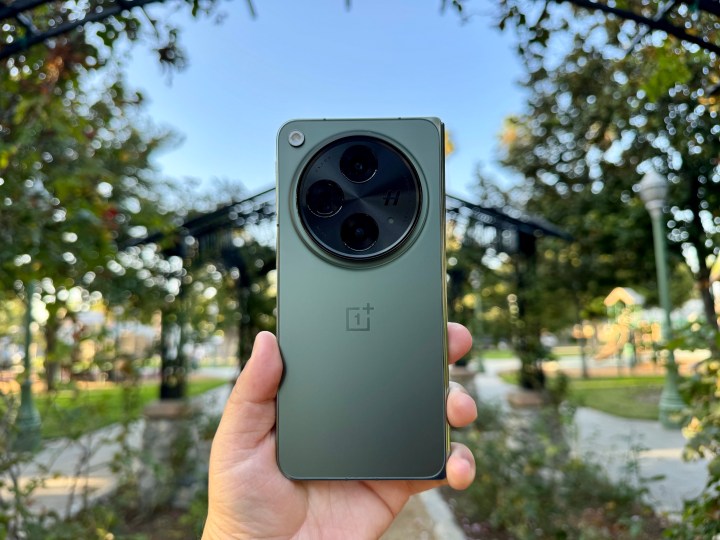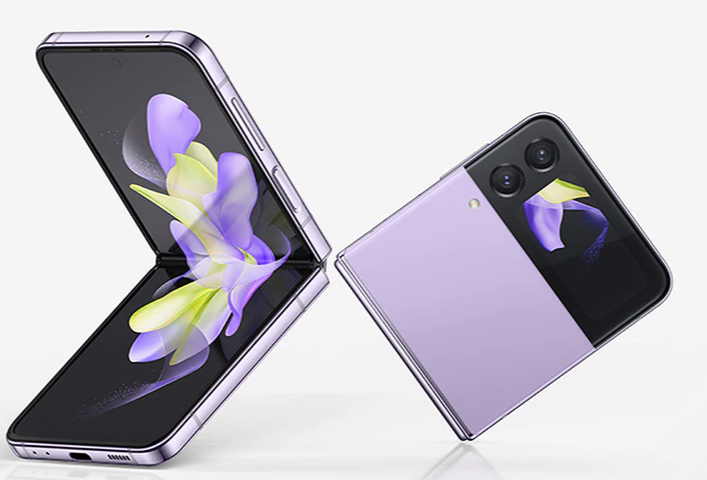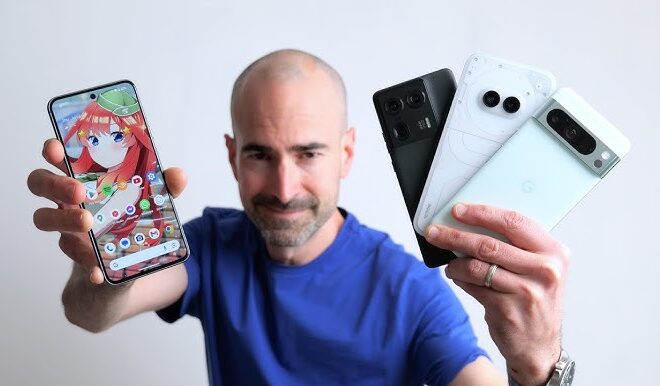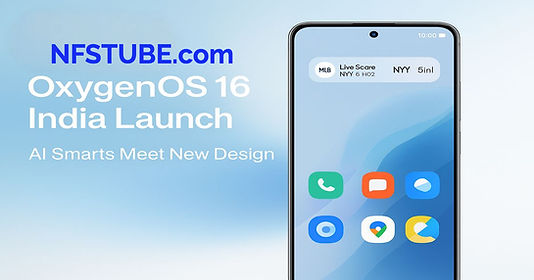
The Ultimate Guide to the Best Android Phones and Gadgets of 2024: A Deep Dive into Innovation and Performance
The Android ecosystem in 2024 is more vibrant, competitive, and innovative than ever before. Gone are the days of incremental updates; we are now in an era of transformative change driven by on-device artificial intelligence, sophisticated camera systems that rival professional equipment, and a newfound commitment to software longevity. For consumers, this translates into a dazzling array of choices, from powerhouse flagship Android phones that push the boundaries of performance to value-packed mid-rangers and futuristic foldable devices. Navigating this landscape can be daunting, but it also presents an exciting opportunity to find a device that perfectly aligns with your needs.
This comprehensive guide will dissect the current state of the market, offering a deep dive into the key trends shaping the industry. We will analyze the top flagship contenders, explore the exciting advancements in foldable technology, and shine a light on the incredible value found in the mid-range sector. Furthermore, we will look beyond the smartphone to the interconnected world of Android gadgets, exploring how smartwatches and earbuds create a seamless, intelligent ecosystem. Whether you’re a tech enthusiast chasing the latest specs, a creative professional demanding a powerful tool, or a practical user seeking the best value, this article will provide the insights and analysis you need to make an informed decision in 2024.
The 2024 Android Landscape: Key Trends and Innovations
This year marks a significant inflection point for Android. The conversation has shifted from raw processing power to intelligent, predictive, and sustainable technology. Three core pillars define the 2024 Android experience: the integration of powerful on-device AI, the evolution of computational photography, and a landmark commitment to long-term software support.
The AI Revolution on Your Device
For years, AI in smartphones was largely a cloud-based affair, requiring an internet connection to perform complex tasks. The latest Android news is dominated by the shift to on-device AI, powered by sophisticated chipsets like Qualcomm’s Snapdragon 8 Gen 3 and Google’s Tensor G3. These processors feature powerful Neural Processing Units (NPUs) that handle machine learning tasks directly on the phone. This results in faster, more private, and more context-aware features. Real-world examples are abundant: Samsung’s Galaxy AI allows you to circle an object in any app to initiate a Google search (Circle to Search), while Google’s Pixel devices offer real-time audio transcription and translation without needing to send your data to a server. This on-device intelligence is not just a gimmick; it’s fundamentally changing how we interact with our phones, making them more proactive and genuinely helpful assistants.
Camera Systems Pushing Photographic Boundaries
The megapixel race is officially over. While high-resolution sensors are still a key marketing point, the true innovation in 2024 lies in a combination of superior hardware and advanced computational photography. Manufacturers are implementing larger primary sensors that capture more light for better low-light performance, sophisticated periscope zoom lenses that offer incredible optical magnification, and variable apertures for greater creative control. However, the software is where the magic truly happens. Google’s Pixel 8 Pro uses its AI prowess for features like “Best Take,” which combines multiple shots to ensure everyone in a group photo is smiling with their eyes open, and “Magic Editor,” which allows for generative AI-powered object removal and repositioning. Similarly, Samsung’s Expert RAW app gives users granular control over their shots, effectively turning their smartphone into a pro-level camera. The focus is no longer just on capturing a photo, but on creating the perfect image.
Software Maturity and Longevity
One of the longest-standing criticisms of the Android platform has been software update fragmentation and short support windows. In 2024, this concern is finally being addressed head-on. Google and Samsung have set a new industry standard by promising an unprecedented seven years of both major OS upgrades and security updates for their flagship devices. This is a game-changer for several reasons. Firstly, it significantly increases the long-term value of a device, ensuring it remains secure and feature-rich for years to come. Secondly, it promotes sustainability by encouraging users to hold onto their phones longer, reducing e-waste. This commitment signals a maturation of the market, where a premium experience is defined not just by the hardware you buy today, but by the support you receive for years to come.

The Flagship Battleground: Analyzing the Top Android Phones
The pinnacle of the Android experience is found in the flagship category, where manufacturers showcase their most advanced technology. In 2024, the competition is fierce, with each top contender offering a unique philosophy and feature set tailored to different user priorities. Here, we break down the leading models to help you understand their distinct strengths.
The All-Round Powerhouse: Samsung Galaxy S24 Ultra
The Samsung Galaxy S24 Ultra continues its reign as the “everything phone.” It’s an uncompromising device built for power users, creators, and anyone who refuses to settle. At its core is the custom-tuned “Snapdragon 8 Gen 3 for Galaxy” chipset, providing class-leading performance for demanding games and multitasking. Its standout feature is the stunningly bright and flat Dynamic AMOLED 2X display, which is perfect for both media consumption and productivity with the integrated S Pen stylus. The camera system is arguably the most versatile on the market, headlined by a 200MP main sensor and a new 5x periscope telephoto lens that delivers exceptional clarity at extreme zoom ranges. Wrapped in a durable titanium frame and supercharged with Galaxy AI features, the S24 Ultra is the definition of a premium, do-it-all flagship.
- Best for: Productivity enthusiasts, mobile photographers who value zoom, and users seeking the most powerful hardware available.
- Key Specs: 6.8″ QHD+ Display, Snapdragon 8 Gen 3 for Galaxy, 12GB RAM, 200MP Main Camera, 50MP 5x Telephoto, 5000mAh Battery, S Pen.
The AI and Photography Maestro: Google Pixel 8 Pro
Where Samsung focuses on hardware supremacy, Google’s Pixel 8 Pro champions the power of software and artificial intelligence. Powered by the custom-built Tensor G3 chip, the Pixel 8 Pro is designed from the ground up to excel at machine learning tasks. This translates into a user experience that feels incredibly smart and intuitive. The “pure” Android interface is clean, fluid, and free of bloatware. However, the camera is the true star. While its hardware is excellent, Google’s computational photography is what sets it apart. Features like Photo Unblur, Magic Eraser, and the new, groundbreaking Magic Editor make it possible to capture and perfect shots in ways no other phone can. The Pixel 8 Pro is the ultimate point-and-shoot camera, consistently delivering stunning photos with minimal effort.
- Best for: Photography lovers, users who value a clean and intelligent software experience, and those who want the latest Android features first.
- Key Specs: 6.7″ Super Actua Display, Google Tensor G3, 12GB RAM, 50MP Main Camera, 48MP 5x Telephoto, 5050mAh Battery.
The Performance-Focused Challenger: OnePlus 12
OnePlus has always catered to the enthusiast crowd, and the OnePlus 12 proudly carries that torch. Its mantra is “Never Settle,” and it delivers on that promise with a focus on raw speed and a smooth user experience. It packs the standard Snapdragon 8 Gen 3 chip, a massive vapor chamber cooling system for sustained gaming performance, and arguably the fastest charging speeds in the mainstream market (100W wired and 50W wireless). The display is a visual treat—a super-bright ProXDR panel with a high refresh rate that makes everything feel incredibly responsive. While its Hasselblad-tuned camera system is very capable and has improved significantly, the phone’s primary appeal lies in its sheer performance and charging convenience. It’s the phone for those who want to live in the fast lane.
- Best for: Gamers, performance junkies, and anyone who prioritizes charging speed and a fluid, responsive interface.
- Key Specs: 6.82″ QHD+ ProXDR Display, Snapdragon 8 Gen 3, up to 16GB RAM, 50MP Main Camera, 64MP 3x Telephoto, 5400mAh Battery.
Redefining Form and Value: Foldables and the Mid-Range
While flagships capture the headlines, two of the most exciting areas of growth in the Android world are in foldable devices and the hyper-competitive mid-range segment. Foldables are maturing from experimental tech into polished, practical devices, while mid-range phones are inheriting flagship features at an astonishing pace, offering incredible value for money.
The Maturing Foldable Market
Foldable Android phones are no longer just a novelty. With each generation, manufacturers have refined hinge mechanisms, improved screen durability, and optimized software for the unique form factors. This has led to two distinct and viable categories.
- Book-Style Foldables (e.g., Samsung Galaxy Z Fold 5, OnePlus Open): These devices transform from a standard smartphone into a small tablet, unlocking unparalleled multitasking potential. The OnePlus Open made waves with its wider, more user-friendly cover screen and a lighter design, while the Galaxy Z Fold 5 remains a productivity powerhouse with its S Pen support and refined software. These are for users who want to replace both their phone and a small tablet with a single, powerful device.
- Clamshell Foldables (e.g., Samsung Galaxy Z Flip 5, Motorola Razr+): These phones prioritize portability, folding down to a compact square that fits easily into a pocket or small bag. The defining feature of the latest generation is the large, highly functional cover screen. On the Z Flip 5 and Razr+, you can run full apps, reply to messages, and use widgets without ever opening the main display, making them perfect for quick interactions and digital minimalism.
The Unbeatable Value of the Mid-Range
You no longer need to spend over a thousand dollars to get a fantastic smartphone experience. The mid-range market is where some of the most impressive innovation in value is happening. Flagship-grade features are trickling down, creating devices that punch well above their weight class.
- Google Pixel 8a: This is the prime example of a “smart” mid-ranger. It packs the same Tensor G3 chip as its flagship sibling, the Pixel 8 Pro. This means it gets access to nearly all of Google’s exclusive AI and camera features, including Magic Editor and Best Take. While some hardware compromises are made in the display and build materials, the core experience and photographic output are virtually flagship-level, making it an incredible deal.
- Samsung Galaxy A55: Samsung excels at bringing a premium feel to a more accessible price point. The Galaxy A55 features a glass and metal design, a vibrant AMOLED display, and a capable camera system. Crucially, it also benefits from Samsung’s excellent software support promise (four years of OS updates), ensuring it remains a secure and reliable device for years. It’s a perfect choice for users who want a dependable, all-around performer without breaking the bank.
Building Your Ecosystem: The Best Android Gadgets
A modern smartphone is the hub of a personal technology ecosystem. The experience is elevated when paired with a suite of connected Android gadgets that work in harmony. Smartwatches, earbuds, and other accessories extend the phone’s functionality, providing convenience, health insights, and immersive entertainment. Building a cohesive ecosystem is key to unlocking the full potential of the Android platform.
Smartwatches and Wearables
Modern Android smartwatches have evolved far beyond simple notification mirrors. They are sophisticated health and fitness trackers and powerful extensions of your phone.
-Reviewer-Photo-SOURCE-Julian-Chokkattu-(no-border).jpg)
- Samsung Galaxy Watch 6: Running Google’s Wear OS with Samsung’s One UI skin, this watch offers the deepest integration for Samsung phone users. It boasts advanced health sensors, including a body composition analysis tool, ECG, and blood pressure monitoring (region-dependent). Its rotating bezel (on the Classic model) provides a satisfying and intuitive way to navigate the interface.
- Google Pixel Watch 2: For users of Pixel phones or those who prefer a pure software experience, the Pixel Watch 2 is an excellent choice. It features a sleek, minimalist design and leverages deep Fitbit integration for best-in-class sleep tracking, stress management, and fitness metrics. Its performance is snappy, and its integration with Google services like Wallet and Maps is seamless.
True Wireless Earbuds
High-quality audio and smart features are the hallmarks of today’s best wireless earbuds. They offer more than just music; they provide noise cancellation for focus and seamless integration with your digital life.
- Google Pixel Buds Pro: These are the perfect companion for any Android user, especially those with Pixel phones. They feature excellent Active Noise Cancellation (ANC), a comfortable fit, and intelligent features like multipoint connectivity (allowing them to be connected to a phone and laptop simultaneously) and seamless integration with Google Assistant for hands-free control.
- Samsung Galaxy Buds2 Pro: For those within the Samsung ecosystem, the Galaxy Buds2 Pro deliver a premium audio experience. They support 24-bit Hi-Fi audio for superior sound quality when paired with a compatible Galaxy device and feature impressive 360 Audio with head tracking for an immersive, spatial sound experience when watching movies or playing games.
Best Practices for a Seamless Ecosystem
To maximize your experience, consider these tips. Sticking within a single brand’s ecosystem (e.g., a Samsung phone, watch, and buds) often provides the most frictionless experience with proprietary features like Samsung’s Auto Switch. However, Android’s platform-level features like Fast Pair for easy setup and Nearby Share for file transfers work wonderfully across different brands. When choosing your Android gadgets, pay attention to their software support and feature compatibility to ensure a cohesive and future-proof setup.
Conclusion: Your Perfect Android Setup Awaits
The Android landscape of 2024 is defined by intelligent innovation, user-centric choice, and long-term value. The key takeaway is that the “best” device is no longer a one-size-fits-all title. It’s a personal decision based on your priorities. If you demand the absolute pinnacle of hardware versatility and productivity, the Samsung Galaxy S24 Ultra stands ready. If your world revolves around capturing the perfect photo with the help of brilliant AI, the Google Pixel 8 Pro is your ideal companion. For those who crave raw speed and performance, the OnePlus 12 delivers in spades.
Beyond the flagships, the maturation of foldables and the incredible value offered by mid-range heroes like the Pixel 8a mean there has never been a better time to find a device that fits your budget and lifestyle. By pairing these powerful Android phones with an ecosystem of smart Android gadgets, you can create a connected, intelligent, and deeply personal technology experience. The future is here, and it’s powered by Android.



